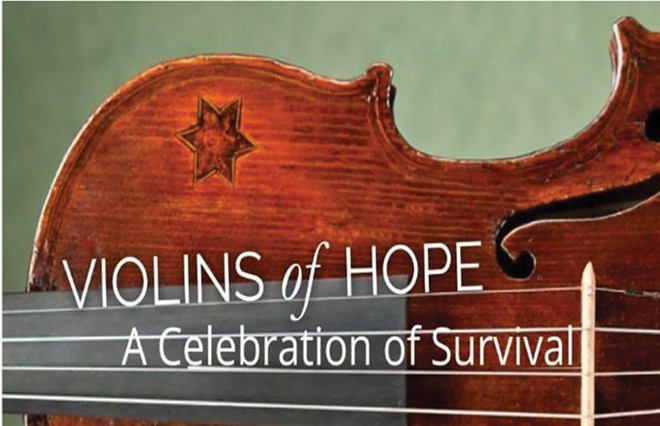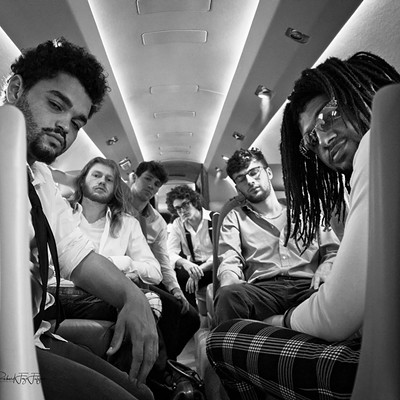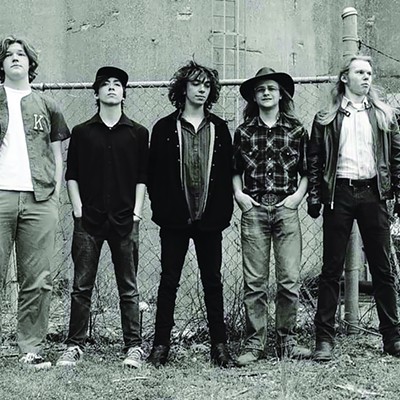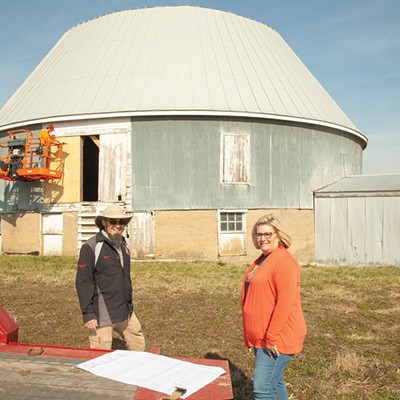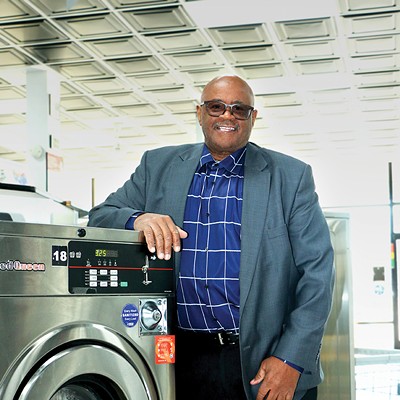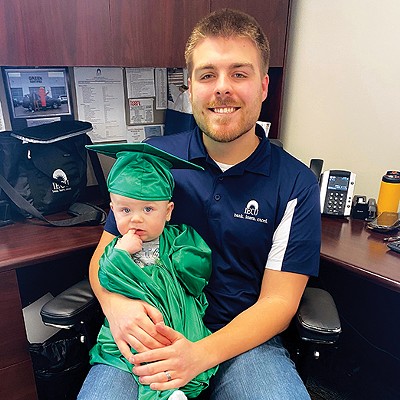Lilting, soulful and harmonic melodies played on violins will fill Springfield Sept. 7-13. Twelve violins from the international project Violins of Hope will be on display at the Illinois State Museum. Six of the violins will be featured in concerts across town and played by local musicians. The week of music is sponsored by the Jewish Federation of Springfield.
Violins of Hope is a project set up by Israeli master violin maker and player Amnon Weinstein who wanted to memorialize Jewish lives lost in the Holocaust by meticulously restoring surviving violins. He and his son, Avshalon, also a master violin maker, have collected over 80 violins that have been played in concerts throughout the world, the first in 2001 in Istanbul.
The project showcases violins that were played by Jewish musicians before and during the Holocaust. Some of the violin owners perished in a concentration camp, but the violins survived and have been restored. Each has a story. Karen Westbrook, president of the Jewish Federation of Springfield, says, "These violins embody the spirit of perseverance that can resonate across all cultures and communities. It is important to share these beautiful instruments and what they represent – a celebration of survival. We hope many will come, no matter one's religion."
On Sept. 7 the violins will go on display at the Illinois State Museum with a reception starting at 5:30 followed by an opening recital, A Celebration of Survival. A violin not in the display will be brought to town by Katrin Stamatis, principal second violinist with the Oklahoma City Philharmonic Orchestra. She will join her sister, Dr. Yona Stamatis, associate professor of ethnomusicology and director of the music program at the University of Illinois, to share the unique story of their family's violin, the Klingenthaler violin. Yona will lead the lecture, followed by a recital including Katrin on violin, Lisa Nelson on viola, and Jacobsen Woolen on cello.
The grandfather of Yona and Katrin Stamatis was Arno Kahn who lived in Cologne, Germany, and was given the instrument by his parents after World War I. When the Nazis gained power in 1933, Kahn's parents moved to the Netherlands, taking the violin and other valuables with them while Arno stayed in Cologne. He emigrated to New York in 1937. In the 1940s his parents attempted to get passage to New York, but the Netherlands was invaded by the Germans before they could leave. They buried the violin in their garden before being sent to Auschwitz, where they died. Kahn's uncle survived, returned to the family home, and dug up the violin.
Six of the violins will be featured in the various concerts.
The Rabin violin is the premiere instrument in the collection as it was signed on Jan. 10, 1995, by Yitzhak Rabin, prime minister of Israel from 1974-1977 and 1992-1995. He was assassinated in November 1995.
The Klezmer violin is handmade, around 120 years old, and decorated with a Star of David made of mother of pearl.
The Auschwitz violin was made around 1850 in a German workshop in Saxony or Tirol; it was originally owned and played by an inmate in the men's orchestra at the Auschwitz concentration camp. After the war, a man named Abraham Davidowitz, working to help displaced Jews, was approached by a man, needing money, who offered to sell his violin. Davidowitz bought it for $50, hoping his son, Freddy, would learn to play. Years later, Freddy donated the violin to Violins of Hope.
The Wagner and Weichold violins both belonged to the Palestine Orchestra, which was created in 1936 and in 1948 became the Israel Philharmonic Orchestra. Its musicians were considered first rate, playing in orchestras around Europe; they lost their positions when the Nazis came to power. After the war, Israel boycotted German goods and musicians refused to play German-made instruments. Moshe Weinstein bought instruments so they wouldn't be destroyed but knew he could not sell them. The two instruments are now played worldwide in the Violins of Hope.
The Hakkert violin was handmade by a Dutch Jewish violin maker, Jacob Hakkert, around 1910. Hakkert died at Auschwitz in 1944.
The Weininger violin was owned and played by Erich Weininger, a butcher in Vienna. The violin went with him to Dachau. When he was sent to Buchenwald concentration camp, he was allowed to bring his violin but not allowed to play it. Released from Buchenwald, he returned to Vienna and was one of the last Jews to escape Nazi Europe. Boarding an illegal boat to Palestine, he was arrested because the country did not allow Jews to enter. Deported to Mauritius, he started a band, playing classical and local music in cafes. At the end of the war, he finally reached Palestine in 1945, carrying his violin. His son Zeev donated the violin to the Violins of Hope.
These violins have been restored and were played by Jewish musicians. But one violin, the Heil Hitler violin, will never be repaired or played. A few years ago, an American violin maker in Washington, D.C., bought the instrument. When he opened it up, he discovered the drawing of a large swastika next to the inscription Heil Hitler 1936. It is believed the violin may have been owned by a Jewish musician in 1936 who may have needed repair work done. The repairman could have added the items inside. The violin was donated to the Violins of Hope.
The Violins of Hope remind us of the people lost in the Holocaust yet bring messages of hope, resilience and survival.
About the performances, performers and composers
People may want to take in all the concerts throughout the week as each will offer something different: lectures about a particular violin, different music, and showcasing one or more of the violins. Most concerts require a reservation and some cost $15.
Sept. 7 – 5:30 p.m. Opening reception and recital, Illinois State Museum. See above for details.
Sept. 8 – A noon performance at Temple Israel – free
Sept. 10 – Two performances at 2 p.m. and 4:30 p.m. will be held at University of Illinois Springfield. This concert will feature the six violins (listed above), played by three musicians plus a piano accompaniment, and will have a lineup of music that ranges from a Jewish prayer to the theme from Schindler's List.
Sept. 12 – Held at 10 a.m. in the Trutter Center at Lincoln Land Community College, the concert is called A Violin's Journey. A lecture and performance will focus on the Auschwitz violin and music composed during the Holocaust. Free, but reservations required through Lincoln Land.
Sept. 13 – Music of Hope Final Concert will be held at 6:30 p.m. at the Hoogland. This will be a joyful concert featuring several violins, with songs from jazz, pop and classical, all composed by Jewish composers. Pieces include the opening violin cadenza from Fiddler on the Roof, "Summertime" by George Gershwin, plus more. Musicians who will be performing include Yona and Katrin Stamatis, Carmen Abelson, an Adjunct Professor of Violin at UIS, and Roy Meyer, concertmaster with the Illinois Symphony Orchestra since 2015 who performs with the Chicago Philharmonic. In several concerts, piano accompaniment will be performed by Juan Camacho who is pursuing his doctorate at the University of Illinois in Piano Performance and Literature.
For more information: sjfshalomspringfield.org – Cinda Klickna

